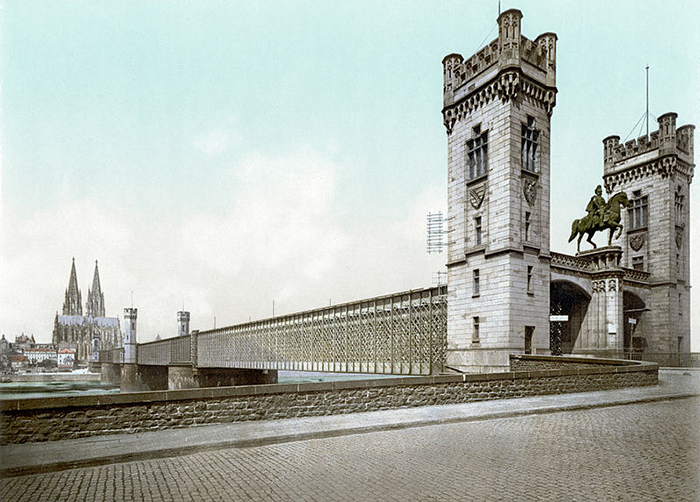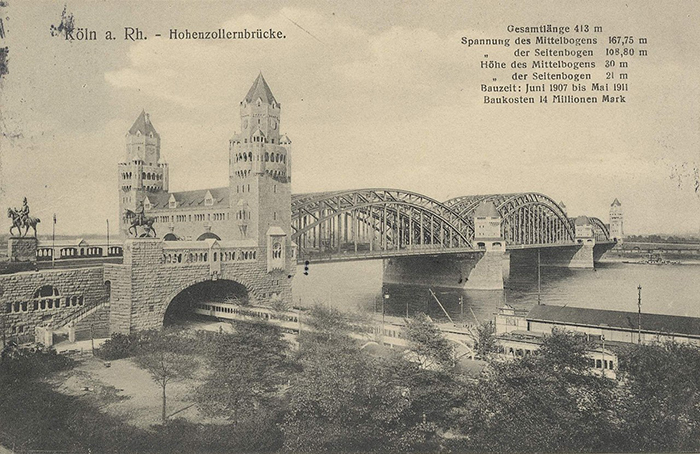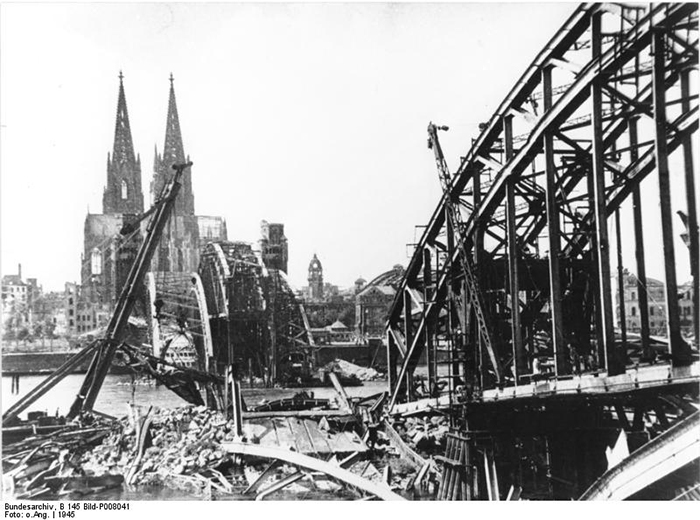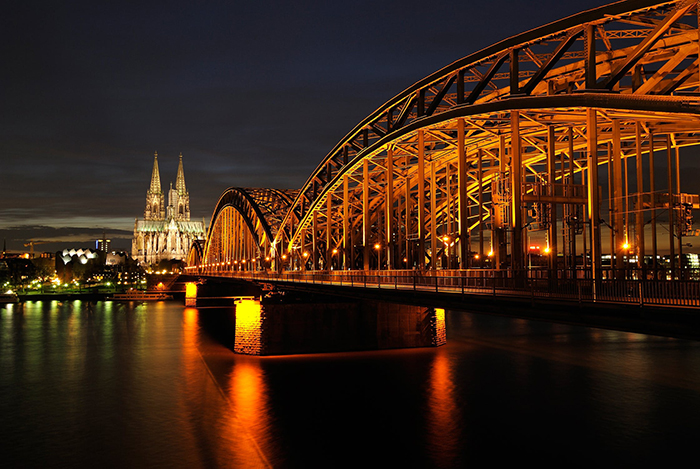

 STUART JORDAN delves into the history of this railway bridge over the Rhine in Cologne.
STUART JORDAN delves into the history of this railway bridge over the Rhine in Cologne.
The Hohenzollern Bridge is a 409m long arched truss bridge, which crosses the Rhine river at Cologne in Germany. It runs east-west and has been built on the same latitude as the famous cathedral. On the western bank it joins Cologne Main Station, whereas on the eastern bank is Koln Messe/Deutz Station.

The Cathedral Bridge over the Rhine.
Originally in the same location was the Cathedral Bridge (Dombrücke). This replaced the pontoons and ferries that were taking goods across the Rhine. The great Prussian interest in the railways required the first permanent crossing of the river in Cologne since the Romans. The Cathedral Bridge had two railway tracks and a roadway, with large ornamental gates added to each end after construction. With the completion of the new Central Station, traffic increased, and it was decided that the current bridge would be replaced.

Postcard showing the Hohenzollern Bridge after completion, with the original tower gatehouses.
The bridge was designed by engineers Fritz Beermann and Freidrich Dirkson and construction began in 1907. The three arch structures would carry four tracks and a roadway across the river. Four equestrian statues of Prussian kings were added, two at on each bank. These depicted Freidrich Wilhelm IV, Wilhelm I, Freidrich III, and Wilhelm II. A turreted gatehouse was built at each end of the bridge. The Hohenzollern Bridge (named after the ruling Prussian family) was officially inaugurated 22nd May 1911 by Kaiser Wilhelm II.
The bridge survived most of World War 2, with almost constant Allied bombing by the end of the war only slightly damaging it. When American troops started their attack on the city retreating German forces blew up part of it on 6th March 1945 to stop it being used by the Allies.

The bridge after being demolished in 1945.
Reconstruction work began in earnest after the war. By 1948 the bridge was useable again by pedestrians. The bridge towers were demolished, and by 1959 the southern sections of roadway were removed but trains could use the bridge again. Further work was completed in the 1980s, with two new tracks added to the northern side of the bridge, as well as pedestrian walkways/cycleways on either side of the bridge.
The newly built tracks were built for use by the S-Bahn and were ballasted, unlike the other four tracks which were attached directly to the bridge superstructure. The lines are signalled so that the two inner tracks can run in either direction.

The bridge as it stands now, with Cologne Cathedral in the background.
From 2008, the custom of adding ‘love locks’ to the bridge began. These padlocks, added by couples, are estimated to add around 15 tons to the weight of the bridge. Deutsche Bahn apparently do not currently see the estimated half a million locks as a problem - the Pont des Arts in Paris had to repair damage and remove locks due to a similar custom.
The Hohenzollern Bridge is currently the busiest railway bridge in Germany, with around 1200 trains crossing every day.